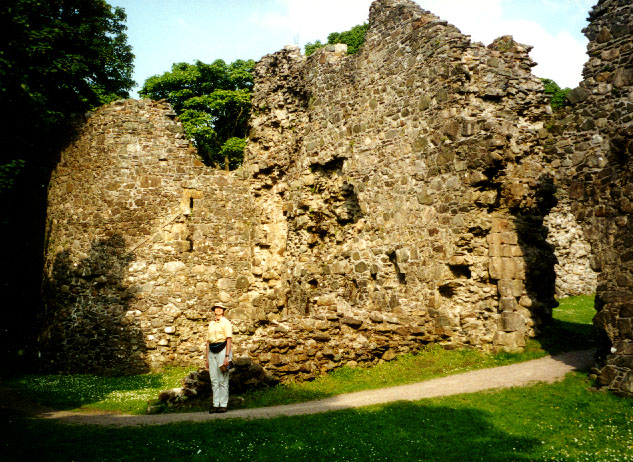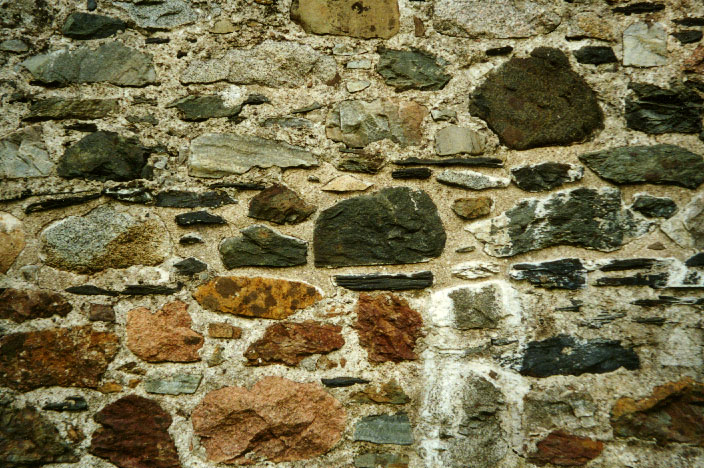
The old castle is nonetheless only a ruin today (see above). Its ruined condition reveals that it was built of an assortment of stone, some of which had been rounded by fluvial transport. That's not surprising, given that the castle sits just next to a river (the Lochy). That river drains an area that was glaciated and thus was subjected to considerable transport of clasts of bedrock from nearby areas, providing the diversity of rock types. The image below shows at least two kinds of granite (the large rounded pink clast at bottom left and the light clast extending off the image at top right), an amphibolite, and various metamorphic rocks. Near the center is a piece of dark slate, which may be from the slates quarried for roofing slate nearby at Ballachulish. Just as the castle would have been a meeting place for diverse peoples coming from the northwest and southeast, Inverlochy seems to have been a meeting place, and resting place, for diverse rock types as well.
